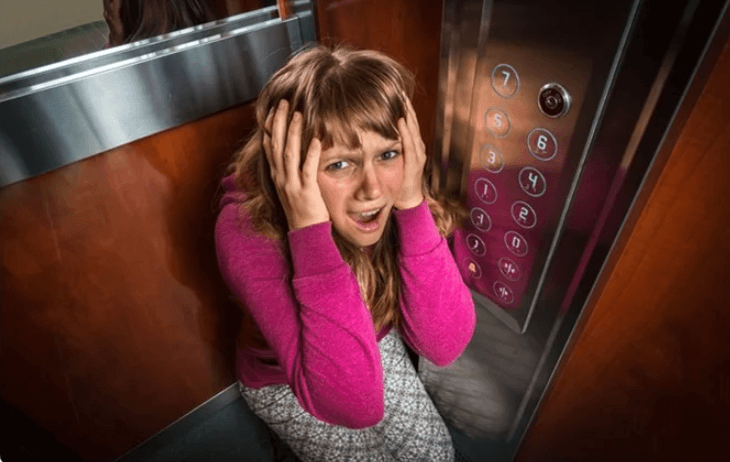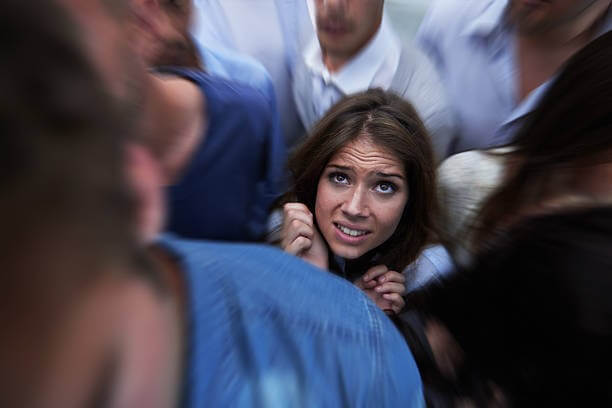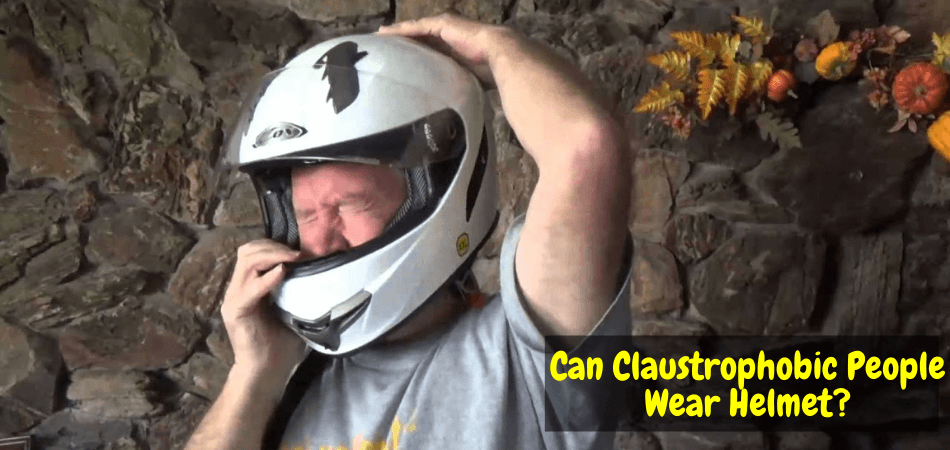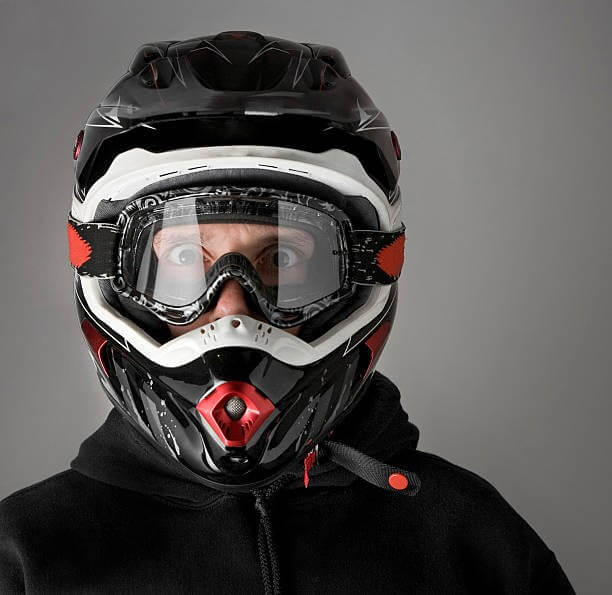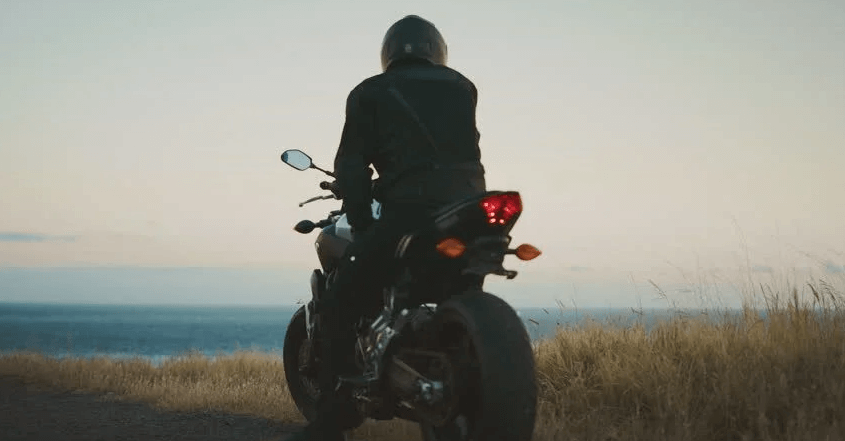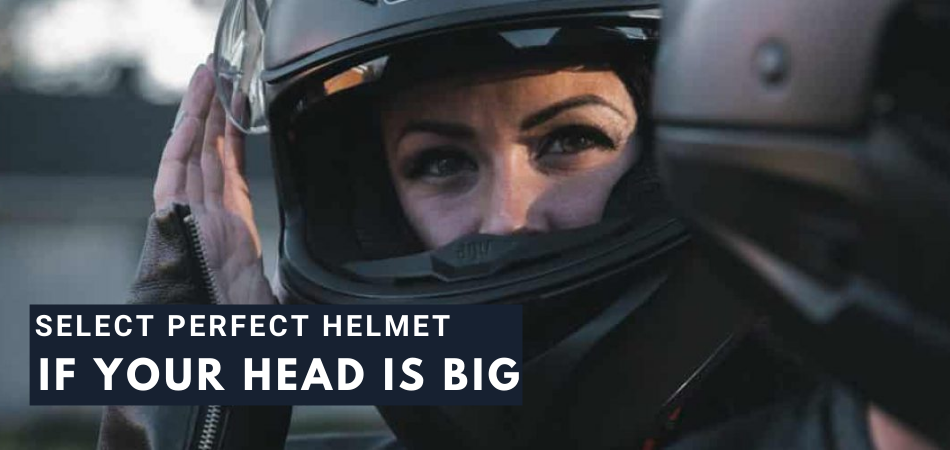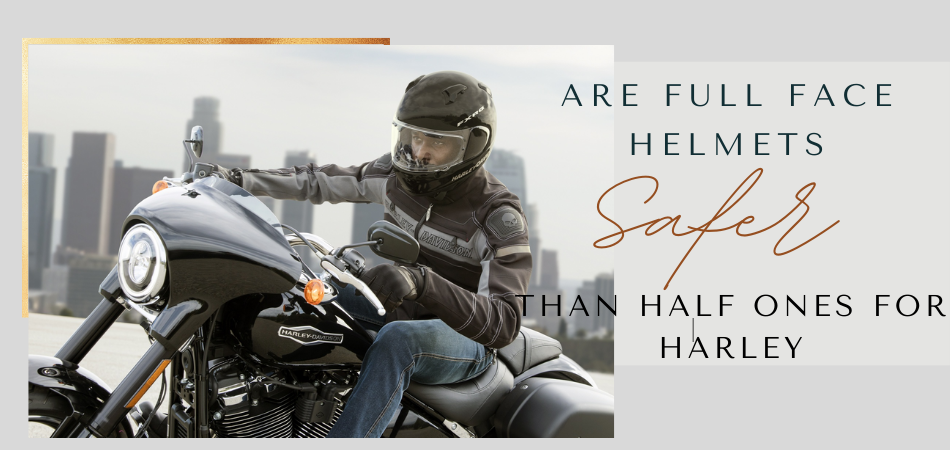Claustrophobia is one condition that can make you do anything to avoid being in confined spaces. Tunnels and lifts can often be a nightmare for people with this condition. Moreover, some claustrophobic riders find it difficult to come to terms with wearing a helmet.
This isn’t much of an issue for some since most helmets allow you to see much less of it. So, can claustrophobic people wear helmet? You may consider quitting biking altogether instead of subjecting yourself to danger. You’ll learn more about helmets and people suffering from claustrophobia in this article; keep reading.
What is Claustrophobia?
Claustrophobia is a common health condition in which the person is irrationally scared of confined spaces. When in confined environments such as lifts, tunnels, crowded places, public toilets, and the like, such persons tend to panic or lose control.
While some claustrophobic persons might have severe symptoms such as panic attacks, some just experience slight anxiety. Moreover, note that completely avoiding such places can heighten their fear.
What Are the Causes of Claustrophobia?
Claustrophobia is usually caused by a traumatic experience during the early childhood of the affected person. However, studies show that claustrophobia can be genetically inherited – usually caused by a substance known as GPm6a.
Some of the unpleasant experiences an individual may experience that can lead to claustrophobia include the following:
- Abused or bullied.
- Kept or trapped in a confined environment.
- Being trapped in a tunnel.
- Had either a claustrophobic father or a mother.
- Turbulence during a flight.
Once a person is claustrophobic, they have the irrational fear of being in enclosures. Many times, the fear isn’t caused by being in an enclosed space; it’s usually by the possibility of being trapped. Some of the places claustrophobic people dread include are listed below.
- Basements, cellars, or tunnels.
- Revolving doors.
- Elevators
- Changing rooms at stores
- Public toilets
- Airplanes
- Small cars, especially those that have central locking.
- Subway stations and cars.
- Crowded places, including nightclubs.
- Tiny rooms and rooms without windows.
- MRI scanners.
How Do I Know if I’m Claustrophobic?
You can self-diagnose claustrophobia if you experience any of the symptoms listed below whenever you’re caught in enclosed spaces. Moreover, note that the degree of the symptoms experienced is usually in proportion to the anticipated danger or threat.
- Quivering body or panic attacks in adults.
- Children may cry, become clingy, freeze up, or start crying.
- Feeling of being sick or nauseous.
- Tight feeling in the chest.
- Increased heartbeat.
- Difficult breathing.
- A sudden need to use the toilet.
- Disoriented or confused feeling.
- Fear of dying or losing control.
- Fear of fainting and dreadful feeling.
This fear can greatly influence the affected individual in many arrears of his life, including relationships.
Treatment for Claustrophobia
Claustrophobic people don’t have to be diagnosed with the condition in a hospital. If you find yourself experiencing any of the symptoms we stated above when exposed to enclosures, you have claustrophobia.
If you’re suffering from this condition, the recommended way out is by consulting a behavioral therapist. Moreover, the best way out is by gradually exposing yourself to situations that trigger the claustrophobic feeling. This technique is referred to as self-exposure desensitization therapy.
Can Claustrophobic People Wear Helmet?
Can claustrophobic people wear helmet? We generally recommend wearing a helmet if you’re involved in any activity that requires you to use one. Claustrophobic people may get their claustrophobic symptoms if they’re wearing a helmet. However, this happens in rare cases. You may feel very comfortable going without your helmet if you’re claustrophobic.
However, you should know that you’re exposing yourself to all the possible dangers that come with a crash while biking. You can take a few seconds to imagine what will happen if you get involved in an accident. A motorcycle helmet for claustrophobia susceptible individuals is a must if you want the best advice.
Moreover, there are certain things you must consider if you’re a claustrophobic rider who has a thing for wearing helmets.
Things You Should Consider Before Getting a Helmet on
Learn to be comfortable with a helmet on
Your safety depends a great deal on the helmet you’re wearing, just in case you get involved in a crash. So, whether or not you’re claustrophobic, you need to get used to having that helmet on.
The type of helmet you choose is important.
You may believe that half-face helmets are the best for claustrophobic riders. This is true in a sense because the chin guard may give people with claustrophobia the feeling of confinement and suffocation. However, full-face helmets are the best when you bring the rider’s safety into the picture.
The shape and size of your helmet is also important
Wearing helmets that don’t properly fit can be of drastic consequences. We recommend that you get a helmet that fits properly – not too tight and not too loose. Moreover, you can consider going for a helmet with some room inside for necessary adjustment.
Advantages of Riding With a Helmet on
You probably felt helmets give riders the appearance and charisma of some Hollywood star. In addition to the smart appearance which riders have when they have their helmets on, there are other benefits of wearing a helmet when riding. Here are some of them.
Protection from harsh weather conditions
Riding a motorcycle is enough danger on its own for additional discomfort. Weather elements such as rain and dust storms can be a huge distraction as your sight will be greatly affected. A helmet can help shield your face from all the side effects of this, so you should make sure you have one on.
Increased visibility of what’s ahead
If you’re frequent in using motorcycles or bicycles, you must have experienced bugs entering your eyes – especially at night. Having a helmet with a face shield on can prevent these bugs and other airborne objects such as dust or twigs from entering your eyes. Recent motorcycle helmets are equipped with sun glare protection, giving you an unobstructed view.
Reduced noise from the wind
The windshield on helmets helps to prevent wind from entering your eyes. In addition to this, helmets cover your ears, protecting you from the noise that comes from the wind. This increases your awareness of the surrounding, alerting you of any dangers you may be approaching.
Protection from head injuries
The dangers associated with biking are already enough to make you want to avoid it altogether. In the case of a crash, bikers who have their helmets on are prone to suffer injuries. Moreover, the injuries sustained in this case are nothing compared to the possibilities associated with biking without a helmet. Conditions as bad as brain injuries are common – and death in severe cases.
Tips For Riders With Claustrophobia
If you have claustrophobia, you may feel uncomfortable having a helmet on. This is usually because the chin guard can make one feel confined or suffocated. Neglecting your helmet for such a reason is not the best option in this case, as you can be exposing yourself to danger. Here are some tips that can help you alleviate the situation.
- It won’t be a good experience if you suddenly begin to panic when you’re on the highway – at high speed. A good practice that can help ease the panic is by wearing the helmet around your home for a while. If you get an uncomfortable feeling, then raising the visor instead of removing the helmet can help to ease the situation.
- One of the reasons why you feel claustrophobic is probably because you have limited air in enclosures. If you have adequate airflow around your face, the chances of you feeling claustrophobic are reduced.
- You can allow some air to flow onto your face by lifting the visor or windshield a little bit. Note that the amount of air entering should be just enough to keep your face properly aerated – and not dry up or damage your eyes.
- You may consider going for helmets that have provisions for better aeration. Some recent helmets, such as the Bell Bullit helmet, come with vents with metal meshes. These meshes cover both the exhaust and intake ventilation slats. This will help you to get a fresher breath while riding.
- The color of your visor lens can help you to see better. A clear sight can help to reduce your feeling of being enclosed. On other occasions, a dark tinted lens can give you the feeling of wearing normal sunglasses – further boosting your confidence in a way.
- You probably have that claustrophobic feeling due to the amount of free space you can see in front of you. In that case, we recommend that you go for a helmet with wider eye ports. Furthermore, an ideal helmet for a claustrophobic person should allow you to see very little of the helmet body.
- Make conscious efforts to make your brain believe that you’re not trapped. You can do this by holding your hand out in front of you. Slowly bring back your hand so that you can touch your face through the visor of your helmet.
- You can ease the situation by listening to your favorite album while the helmet is on. To help you do this, we recommend that you go for a helmet with built-in Bluetooth. If you can’t find one, helmets that allow you to wear your Bluetooth comfortably are worth the investment.
Conclusion
Can claustrophobic people wear helmet? You can and should wear a helmet if you’re riding your sweet two-wheel, whether you’re claustrophobic or not. The importance of helmets for motorcycle riders can’t be over-emphasized, making it a worthy investment.
You can alleviate the claustrophobic feeling by increasing the amount of airflow around your face. Breathing in your warm air can also cause that claustrophobic feeling. In that case, chewing minty gums or sweets can help to improve the situation.

